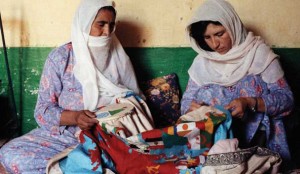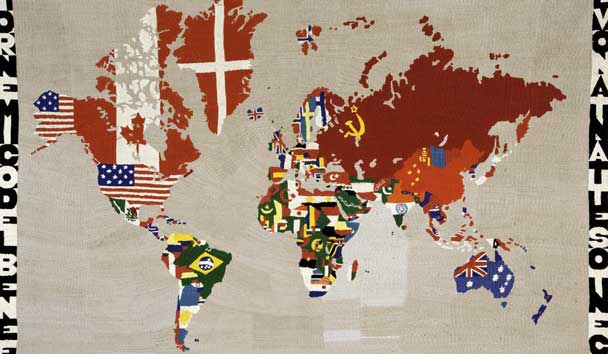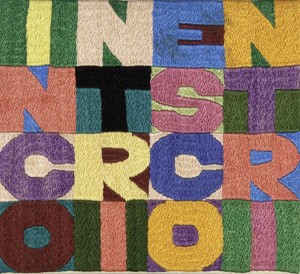As a very young girl, I was taught to embroider by my grandmother, and so passed along these skills to my daughter when she was in elementary school and spent hours doing craft projects. It’s meaningful to me when skills, whether carpentry or sport or cooking, are communicated from generation to generation. Of course, these moments provide far more than just physical instruction. Grandfathers teach their sons and grandsons to fly cast; families pass long recipes, card tricks and other amusements provide the space for inter generational relationships to flourish.
As an adult, I love discovering artists who work in traditional crafts with contemporary significance. Which is why I wanted to visit the Fowler Museum and explore the new show Order and Disorder: Alighiero Boetti by Afghan Women. An Italian who moved to Kabul in the 1970s, Boetti grew up watching women embroider (according to the exhibition catalog), and so it was a natural step for him to employ traditional embroiders of Kabul in Afghanistan to work up designs that he drew on cloth. The first of his now-very-famous Mappe canvases were produced this way; however, when the Russians invaded the country, many of Boetti’s embroiderers wound up in refugee camps. Undaunted, Boetti managed to smuggle more canvases into the camps and the women continued to produce works that are now worth millions. We are lucky to be able to witness what it was like for these women to do this work in the camps because of the work of local photographer, Randi Malkin Steinberger, whose images accompany the Boetti show. Steinberger snuck into the refugee camps for just one afternoon, and her brave actions allow us to understand how the Boetti tapestries came into being.
So, was Boetti ahead of the free trade movement or was he taking advantage of incredibly unique, but cheap, labor? Now, almost 20 years years after his death, a surge of popularity surrounds his work – along with the Fowler’s fascinating show is a solo exhibit at the Tate Modern in London, and one of Boetti’s richly colored tapestry maps also hangs at LACMA right now, part of a show called Common Places: Printing, Embroidery and the Art of Global Mapping.



